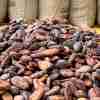On winning the Environment Champion title in the Youth track of Samsung’s Solve For Tomorrow
The Hindu
How three youngsters got together to solve the problem of arsenic contamination in groundwater
Arsenic contamination of groundwater in India has long been a critical topic of research due to the dire impact it has on communities. It has uprooted livelihoods, caused debilitating health conditions and a lifetime of suffering. In India arsenic is found in certain pockets of 152 districts in 21 states. According to data from the Ministry of Drinking Water and Sanitation, around 1,800 rural habitations, home to nearly 2.4 million people, are at risk.
Growing up in Bihar, my team mates Shambhavi Sinha, Abhijeet Kumar and I saw our communities suffer due to the lack of regular monitoring and water treatment facilities. We wanted to take on this challenge head on. While our school helped us shape the initial idea, Samsung’s Solve for Tomorrow (SFT) gave us a platform to refine our concept and bring it to the people truly affected by this crisis.
Our journey was a powerful lesson in resilience, collaboration, and the art of innovation. Our project, which filters arsenic from groundwater using magnetic properties, earned us the title of Environment Champion on the Youth Track. In the pilot phase, it treated over 300,000 litres of water, benefiting 2,300 children. Our solution works by leveraging the magnetic properties of specific materials to repel arsenic molecules, filtering the water in a way that’s eco-friendly and free of chemical waste.
We started with 3D-printed parts, gradually refining our approach until we had a prototype capable of bringing arsenic levels down to a fraction of the WHO’s safety limit. The entire process was a mix of excitement and nerves, especially when we discovered we needed a rare earth magnet to complete our filtration system. With just one day left before the main pitch event in New Delhi, the magnet was nowhere to be found. Tension was high as we scrambled through calls, emails, and every possible lead, while balancing college exams and project deadlines. Our mentors at SFT, however, reminded us that innovation is as much about determination as it is about ideas. In that frantic search for the magnet, I learned a lesson that would stay with me: resilience and faith in our mission. Our work with Samsung took us to research centres in Bengaluru and Delhi, where we engaged in workshops on design thinking and pitch refinement that helped us to think like a designer, focusing not just on what we could build but on whom we were building it for.
Each of us brought something unique to the project. Abhijeet’s expertise in CAD and engineering was important for prototype development, Shambhavi’s data analysis skills ensured our research remained precise, and my focus on heavy metal contamination and water chemistry grounded our project. Together, we learned to rely on each other’s strengths, solving last-minute challenges and pushing through intense deadlines. Today, we are preparing to commercialise our solution, with the goal of providing arsenic-free water across India and to the world, as this problem extends to many countries. We envision a future where safe drinking water is a universal right, not a privilege. Looking back, I’m reminded that while innovation demands a great idea, it also demands a practical vision that is driven by empathy. Finally, nothing can be achieved without collaboration.
The writer is a second-year student of B.Sc. Physics, Dept. of Atomic and Molecular Physics, Manipal Academy of Higher Education (MAHE).













